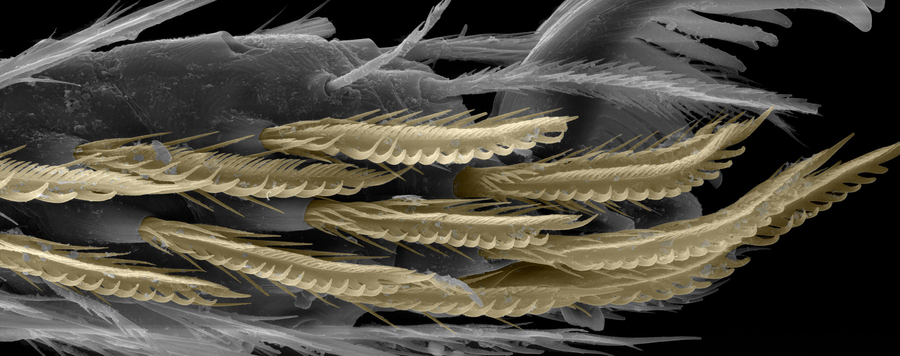
Pholcid comb-hairs
Comb-hairs on the fourth tarsi of males and females are a classical theridioid character, but they also occur in pholcids. Previous studies on Pholcus phalangioides (Fuesslin 1775) have shown that in this species the comb-hairs function in the context of sticky silk wrap attack just as in theridiids. Here we investigate pholcid comb-hairs in a comparative way, studying the tarsal hairs of representatives of 42 pholcid genera with the SEM. We found two principal morphologies, a simple and a complex type of comb-hair. We found two principal types of comb-hair distribution on the tarsus: in distal patches or in ventral rows, but intermediate types also occur. Character mapping suggests that simple comb-hairs are derived from complex ones, and that distal patches are plesiomorphic, ventral rows derived. We speculate that pholcid comb-hairs may be derived from hairs (the “accessory claws”) that grasp silk in functional correlation with the median claw. In a female shock-frozen during wrap attack, the silk line passed through the notch of a comb-hair, but several functional details (silk grasping and releasing, function of different hair branches) remain unanswered.





